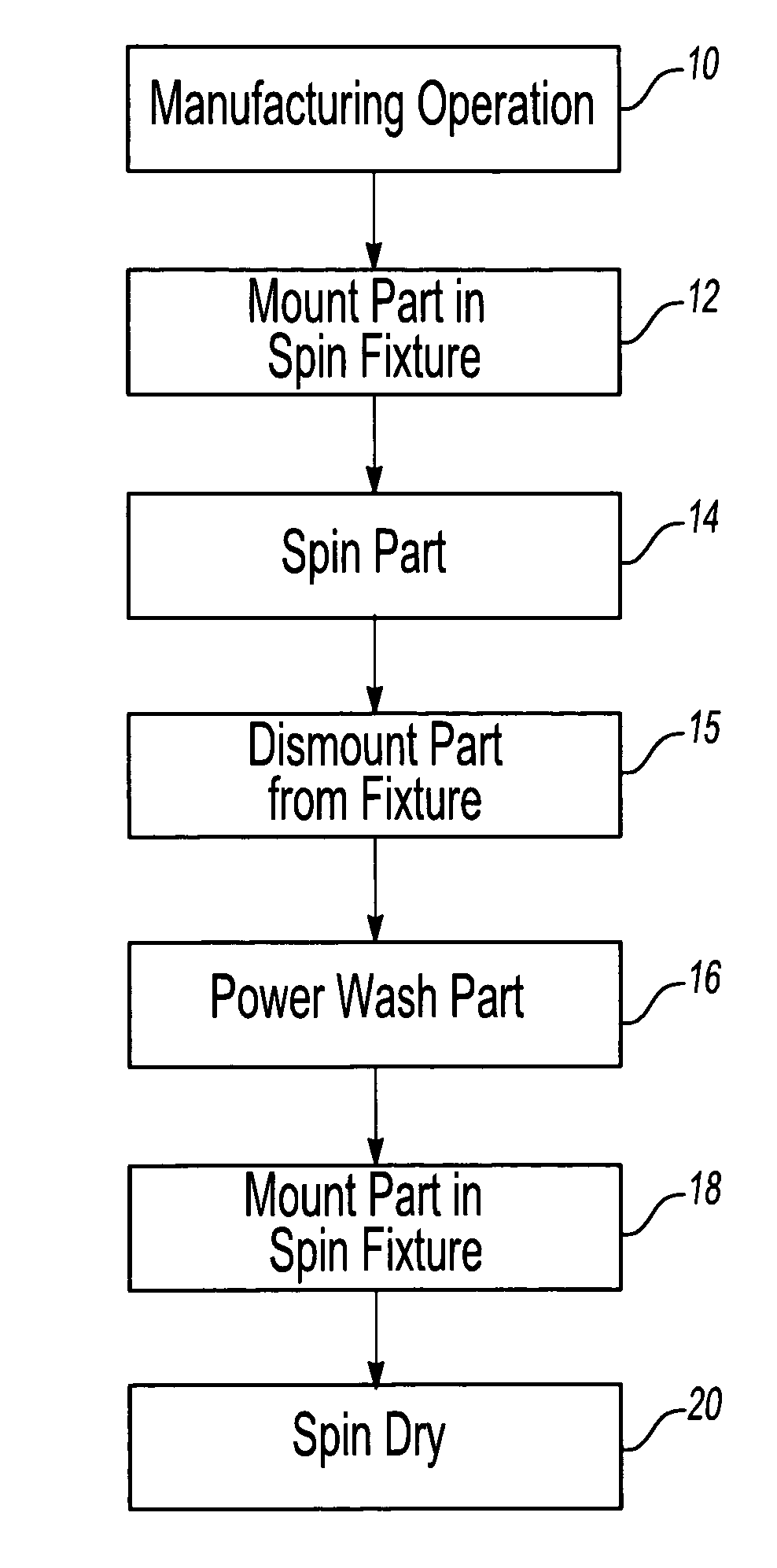Method for cleaning an industrial part
a technology for industrial parts and cleaning methods, applied in the direction of cleaning processes and equipment, cleaning process and equipment, chemistry apparatus and processes, etc., can solve the problems of pollution of the facility floor, damage to the engine after assembly of individual component parts, and pooling of cutting oils and shavings, so as to prevent the pollution of the conveying means and area
- Summary
- Abstract
- Description
- Claims
- Application Information
AI Technical Summary
Benefits of technology
Problems solved by technology
Method used
Image
Examples
Embodiment Construction
[0015] With reference to the drawing, at step 10 the metal part is subjected to a manufacturing operation of some sort. This manufacturing operation can include casting, machining, and / or the like.
[0016] Following the manufacturing operation at step 10, manufacturing debris remains on the part. This debris can include sand, cutting oils, metal shavings, and / or the like. Such manufacturing debris must be removed from the part prior to assembly of the part in the final machine.
[0017] Following the manufacturing operation at step 10, the part is then mounted in a spin fixture at step 12. The actual construction for the spin fixture will vary from one part to another.
[0018] After the part is mounted in a spin fixture at step 12, the part is then spun at step 14 for a time period and at a speed sufficient to eject at least a portion, and preferably most, of the manufacturing debris from the part. In practice, the part is spun at a speed of between 150 and 500 revolutions per minute an...
PUM
 Login to View More
Login to View More Abstract
Description
Claims
Application Information
 Login to View More
Login to View More - R&D
- Intellectual Property
- Life Sciences
- Materials
- Tech Scout
- Unparalleled Data Quality
- Higher Quality Content
- 60% Fewer Hallucinations
Browse by: Latest US Patents, China's latest patents, Technical Efficacy Thesaurus, Application Domain, Technology Topic, Popular Technical Reports.
© 2025 PatSnap. All rights reserved.Legal|Privacy policy|Modern Slavery Act Transparency Statement|Sitemap|About US| Contact US: help@patsnap.com


